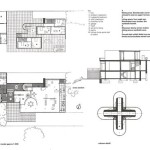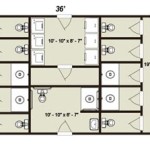Harbin Opera House Plan: An Architectural Marvel
### Introduction The Harbin Opera House is an iconic structure that serves as a cultural landmark in the city of Harbin, China. Designed by the renowned French architect Paul Andreu, the Harbin Opera House Plan is a masterpiece of modern architecture, captivating visitors with its distinctive design and world-class facilities. ### Architectural Design The Harbin Opera House Plan is a testament to Paul Andreu's innovative approach to architecture. The building's exterior resembles a large, white swan about to take flight. Its sleek curves and aerodynamic lines create a dynamic silhouette against the Harbin skyline. The structure is adorned with glass panels that allow natural light to flood the interior spaces, creating a sense of openness and grandeur. ### Performance Venues At the heart of the Harbin Opera House Plan lies two state-of-the-art performance venues: 1.Grand Theater:
The Grand Theater is the main auditorium, boasting a seating capacity of over 1,600. Its horseshoe-shaped design provides excellent acoustics and unobstructed views of the stage. The theater hosts a wide range of performances, including operas, ballets, and concerts. 2.Multifunctional Hall:
The Multifunctional Hall is a flexible space that can accommodate various events, such as conferences, exhibitions, and banquets. Its versatile design allows for different seating configurations and stage layouts, making it an ideal venue for a diverse range of events. ### Facilities and Amenities The Harbin Opera House Plan offers a range of facilities and amenities to ensure a memorable experience for visitors and performers alike: 1.Lobby and Foyer:
The spacious lobby and foyer provide ample space for mingling and relaxation. These areas feature comfortable seating, elegant chandeliers, and artwork that complements the building's overall design. 2.Rehearsal Rooms:
The complex includes several rehearsal rooms equipped with high-quality sound systems, lighting, and mirrors. These rooms allow performers to practice and prepare for upcoming shows. 3.Dressing Rooms:
The Harbin Opera House Plan features well-appointed dressing rooms for performers, complete with makeup stations, mirrors, and private bathrooms. 4.Technical Facilities:
The building is equipped with cutting-edge technical facilities, including advanced sound and lighting systems, projection equipment, and rigging systems. These facilities enable the production of high-quality performances and events. ### Cultural Significance The Harbin Opera House Plan is more than just an architectural marvel; it is a symbol of Harbin's thriving arts and culture scene. The building has hosted numerous prestigious events, including the Harbin International Ice and Snow Festival and the Harbin Summer Music Festival. It has also attracted renowned performers and artists from around the world, contributing to Harbin's reputation as a cultural hub. ### Conclusion The Harbin Opera House Plan is a stunning architectural masterpiece that has become an integral part of the city's cultural identity. Its unique design, world-class facilities, and vibrant atmosphere make it a must-visit destination for anyone interested in architecture, music, and performing arts. The Harbin Opera House Plan is a testament to the transformative power of architecture and its ability to elevate a city's cultural landscape.
Gallery Of Harbin Opera House Mad Architects 29

Harbin Opera House 2024 12 01 Architectural Record

Harbin Opera House Mad Architects Archdaily

Harbin Opera House 2024 12 01 Architectural Record

Gallery Of Harbin Opera House Mad Architects 30

Harbin Opera House In China By Mad Architects Architectural Review

Harbin Opera House In China By Mad Architects Architectural Review

Harbin Opera House Mad Architects Archdaily

Harbin Opera House In China By Mad Architects Architectural Review

Gallery Of Harbin Opera House Mad Architects 31








